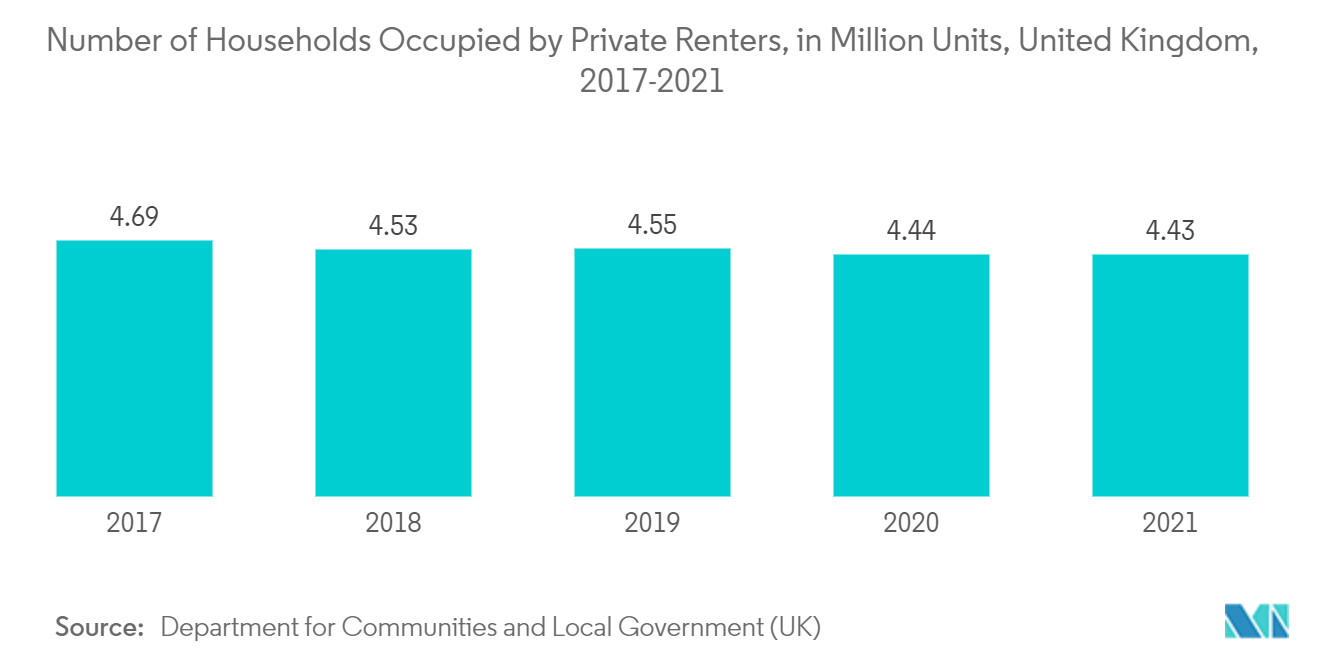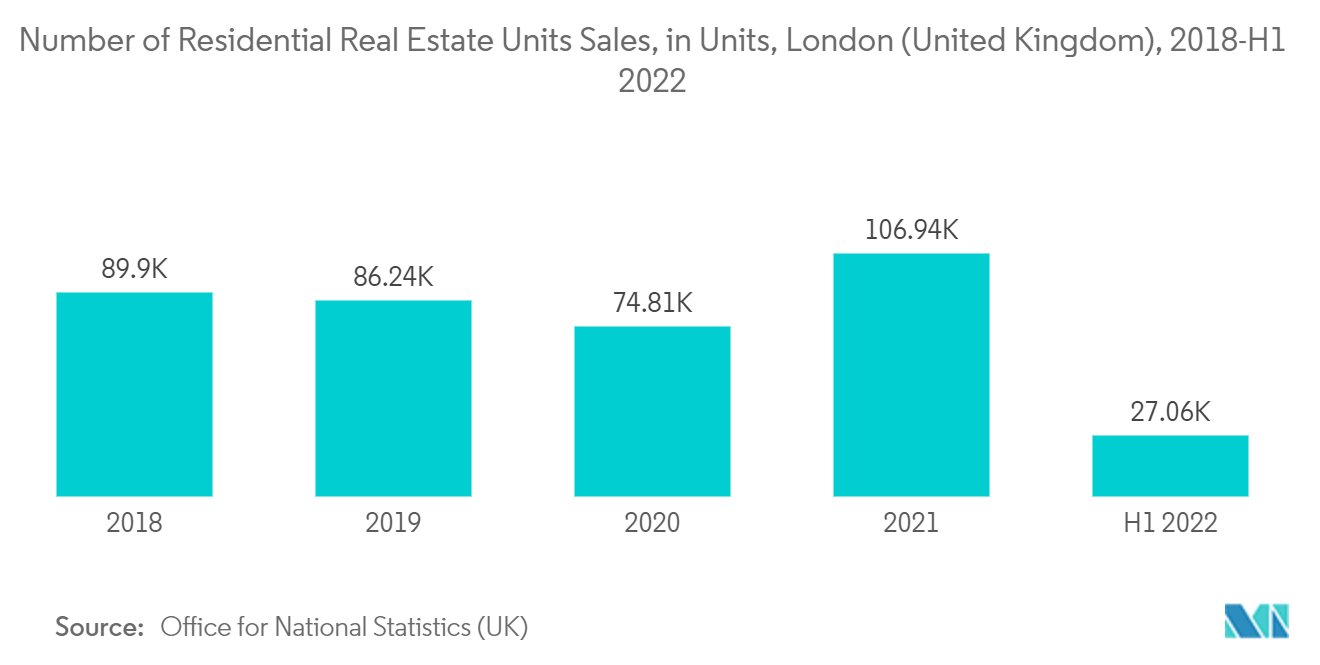Market Trends of United Kingdom Timber Cladding Industry
This section covers the major market trends shaping the UK Timber Cladding Market according to our research experts:
Rising Demand from the Residential Segment
- Timber cladding offers many advantages in the residential sector, such as better insulation, cost-effectiveness, environmental friendliness, durability, lower maintenance, and sustainability. It also enhances the overall appearance of the building. It is commonly used in the interior and exterior of buildings.
- Timber cladding is in use on homes for over a century and includes a solid reputation for being attractive and long-lasting. However, it includes significant drawbacks that limit its commercial potential, such as ongoing maintenance, fire danger, and the need for experienced workers.
- According to the Office for National Statistics (United Kingdom), total public housing construction in Great Britain increased by over 6% in 2021 compared to the previous year, after it declined by around 32% in 2020 due to COVID-19. An increasing trend is expected to continue in the future, increasing the demand for the studied market in the United Kingdom.
- According to the Office for National Statistics United Kingdom, the revenue generated from building and construction in the United Kingdom was around USD 190 billion in 2021, witnessing a growth rate of 16% as compared to the previous year.
- According to the Office for National Statistics (United Kingdom), residential construction in various regions of the United Kingdom increased significantly in 2021 following the pandemic. For example, the Eastern UK from 14,414 to 21,004, Scotland from 8,810 to 12,599, the South East from 18,307 to 21,600, and Wales from 3,909 to 4,171.
- According to the Department for Communities and Local Government (UK), in 2021, the number of households occupied by private renters in the United Kingdom reached 4.43 million. That year, the number of social renter residences was slightly less than 4 million.
- Therefore, considering the above factors, the demand for the timber cladding market in the United Kingdom is expected to rise significantly in the segment soon.

Growing Demand from the Wall Cladding
- Wall cladding is an excellent approach to secure a building from harsh weather conditions and other sorts of troubles that might harm the structure and appearance of the buildings.
- The wall cladding in the residential and non-residential sectors is expected to witness significant growth prospects in the forecast period. Lower interest rates, an increase in real disposable incomes, and numerous investments by the government support the growth.
- Wall cladding is widely used on the building's exterior to protect them from external harm while requiring little to no maintenance. It is also beneficial in extreme low-temperature conditions to keep facilities warm by providing sufficient insulation. These factors also contribute to the region's rising demand for timber cladding in wall construction.
- According to HM Treasury (Economic and Finance Ministry of UK), in 2021/22, the government of the United Kingdom spent around GBP 9.6 billion (~USD 11.53 billion) on housing development, witnessing a growth rate of around 10%, compared to 2020/21. This growth trend is expected to continue, owing to the rising demand for real estate, increasing population, increased job security, and low borrowing costs. Timber cladding is more demanded in housing construction, increasing demand within the country.
- According to the Office for National Statistics (UK), London's residential real estate sales volume reached almost 27 thousand in the first half of 2022. London's residential real estate sales volume was more than 100 thousand in 2021.
- All factors above are likely to fuel the growth of timber cladding in the United Kingdom over the forecast period.


